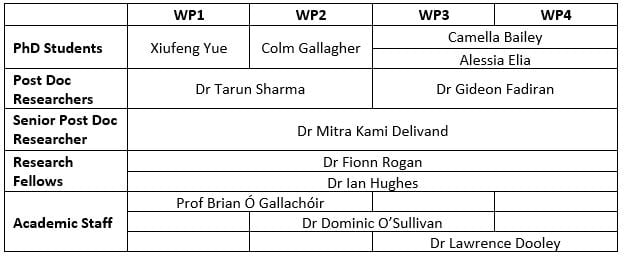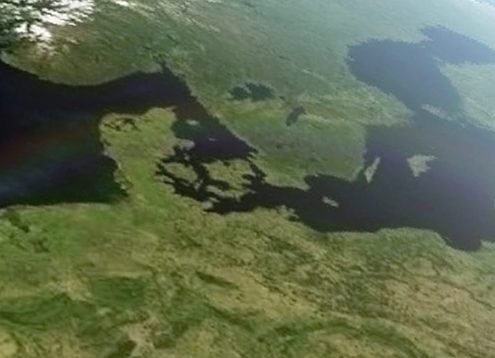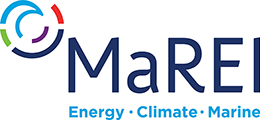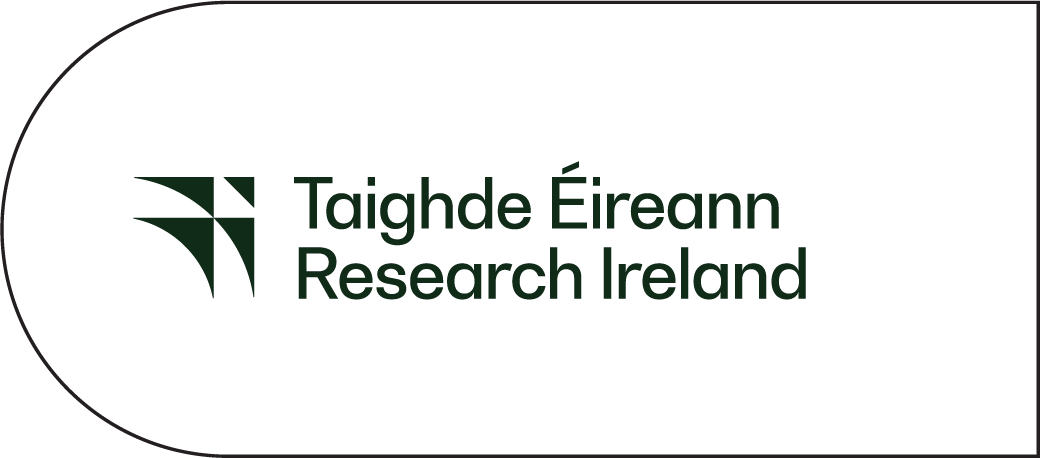The research content of the project consists of four work packages as shown below.
The research output of each WP will inform, and be informed by, the other WPs. For example, outputs from the WP1 on particular technology scenarios are being used in WP2 for a more detailed engineering analysis; outputs on particular technologies from WP1 and WP2 are being used in WP3 for a more detailed economic analysis of the value chain of the particular technology, and outputs from WP1-WP3 are being used for the innovation system policy analysis in WP4. There will be extensive feedback across all the WPs, with preliminary results from WP3 & WP4 being used to refine analysis in WP1 & WP2.
Energy System Analysis – WP1 Description
WP1 is using a suite of energy systems modelling tools to examine the trajectory, developments and changes within Ireland’s energy system (electricity, heat and transport) for the period out to 2050. Multiple scenarios are being developed to examine different configurations of the Irish energy system under various constraints of cost, security, risk and environmental impact. The suite of energy system modelling tools will be able to examine the overall performance of the energy system (in terms of system cost) for differing levels of GHG mitigation ambition (e.g. 60% reduction, 80% reduction, etc.); the tools will also be able to answer detailed questions of reliability and affordability for various parts of the energy system such as energy supply, energy carriers and energy demand-side.
By examining how key technologies perform in multiple scenarios, the WP will help to understand to what extent is there a trade-off between various constraints (e.g. security vs. cost) and what technologies are most robust under a wide range of input assumptions. For example, what is the role of bioenergy in various scenarios and what would be the implications of constrained biofuel imports? What would be the impact of varying timing and trajectory of wind energy deployment and how does wind interact with other technologies within the energy system, e.g. wind vs. gas. The suite of energy systems modelling tools will be able to look outside the electricity sector (which currently accounts for approximately 20% of our energy needs) to examine questions such as what technologies will fuel our future transport needs? What will heat our homes and other buildings? What will be the extent of energy efficiency in buildings and how will it be achieved?
Technology Opportunity Analysis – WP2 Description
The results of the scenario analysis from WP1 are being used to conduct an in-depth exploration of the low carbon energy technology opportunities arising within the full pipeline of the energy supply side, energy carriers, energy end-use and demand side. This WP is examining technology opportunities in all energy-using sectors of the economy: industry, services, residential, transport and electricity generation. This WP is using a multi-criteria assessment to examine technologies according to criteria such as feasibility, co-benefits, sustainability, security, etc. This WP will include extensive engagement with researchers dedicated to particular technologies (e.g. wave energy, Power to Gas, Big Data) in order to understand the full role these technologies could have in Ireland’s energy future.
Value Chain Analysis – WP3 Description
To fully understand and appreciate the economic implications and opportunities of a transition to a low-carbon energy system, the low carbon technologies examined in WP2 and WP3, are being subject to a value-chain analysis whereby each component part of the technology is analysed for its economic contribution and value. Taking wind energy (a relatively mature technology) as an example, there are opportunities arising within the materials & components value chain and the installation and consultancy value chain areas. For marine renewable energy, a value chain analysis might suggest more benefits from the R&D value chain, such as patents and intellectual property. This analysis is examining the full spectrum of opportunities arising from technologies being developed in Ireland and that the modelling analysis shows can have a role in a low carbon energy system.
Innovation System Analysis – WP4 Description
This WP is going beyond merely identifying opportunities, but is contributing to helping to deliver on these opportunities, through the development of an innovation system, which incorporates both technical engineering and business innovation insights. Building on on-going work characterising Ireland’s current low carbon innovation system, this work is using the innovation system framework to analyse the optimal technology-push conditions and market-pull dynamics that help maximise low carbon technology development, roll-out, take-up and diffusion. The research will show how the innovation system can identify and overcome barriers, e.g. through appropriate policy supports and market structures. The innovation system model will help explore the full implications that low carbon technology opportunities have on the wider economy such as the impact of R&D, improved energy security, development of indigenous resources, improved environmental performance, etc. The Cleantech Innovation Index 2012 stated that Ireland “is not bringing many technologies all the way from R&D to the market”
Identifying and enabling the opportunities in the transition to a low carbon energy future requires a critical mass of trained researchers, a big picture perspective and micro-level detail, appropriately developed tools, and a combination of ambitious research and engagement with industry, finance, and business. The project will be undertaken by a multi-disciplinary team of researchers and academic staff with a diverse range of skill-sets, academic training, and affiliations. The full team is shown below.







